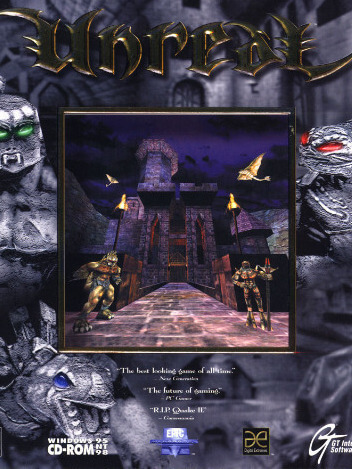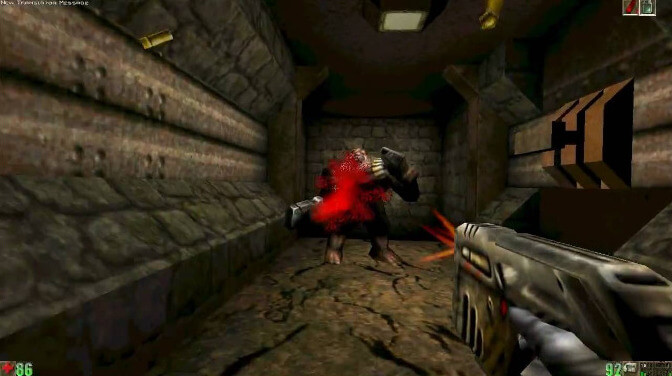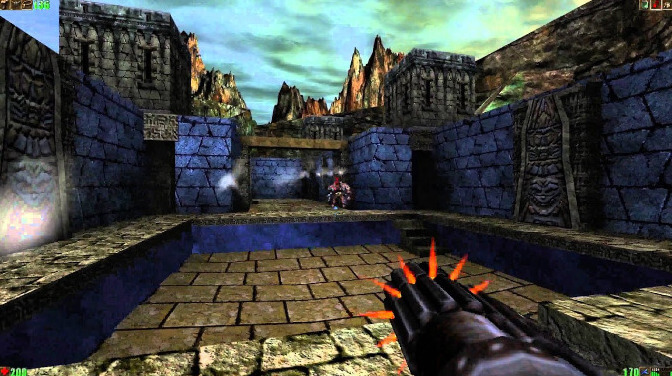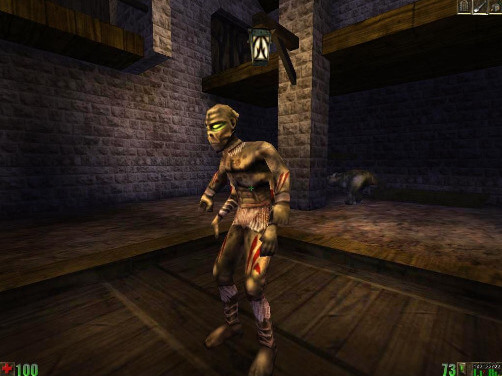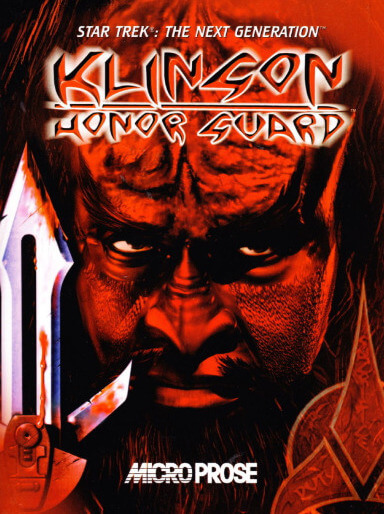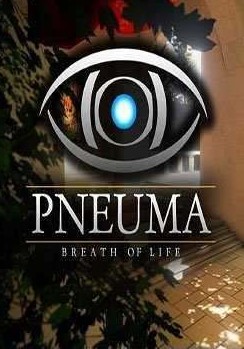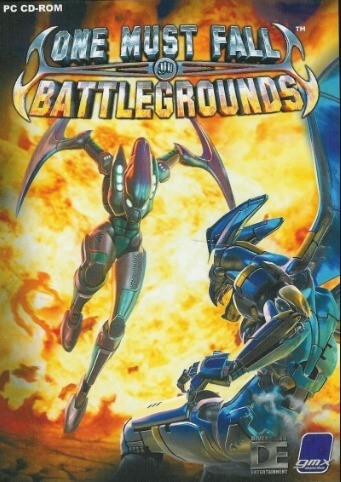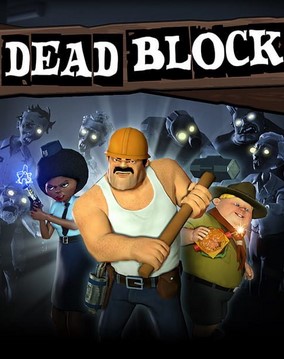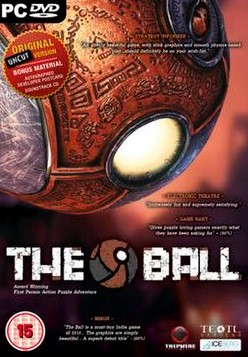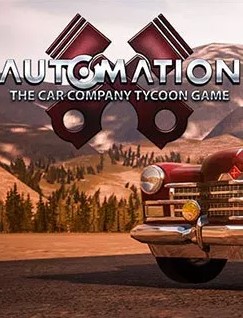Throughout the game the player stumbles across the remains of other humans, often with electronic journals that detail their last days and hint at the cause of their demise. Usually the tales are of desperate struggles to hide from the Skaarj or other bloodthirsty inhabitants of the planet. The player never meets another live human aside from a wounded crew member on the bridge of the prison ship who gasps and dies immediately. Prisoner 849 is likely the only human alive on the planet Na Pali throughout the game.
Prisoner 849 continues to make her way through a series of alien installations, a second crashed human spaceship, and ancient Nali temples infested with Skaarj troops and their minions, eventually arriving at the Nali Castle. Inside the castle, the prisoner locates a teleporter that leads to the Skaarj Mothership. The mothership proves to be a vast labyrinth, but Prisoner 849 manages to find the ship's reactor and destroys it, plunging the vessel into darkness. After navigating the corridors in the dark, the player arrives at the Skaarj Queen's chamber and kills her. Prisoner 849 jumps into an escape pod as the mothership disintegrates. Although the prisoner survives the Skaarj, the escape pod is left to float into space with slim hopes of being found.
Development
Unreal was jointly developed by Epic MegaGames and Digital Extremes and mostly funded with the proceeds from Epic Pinball, Epic's best selling shareware game. In the February 1997 issue of Next Generation, lead designer James Schmalz recalled how it started:
I made the terrain first. A Magic Carpet-type terrain ... I was experimenting with a cavern-set, robot-type game, and I progressed to the continuous mesh technique that we have now, so I changed it from caverns to outdoors. By then I had these polygon creatures, like this dragon flying around - that was the first good polygon creature we made up. From there we added buildings, and lead programmer Tim Sweeney got into making this editor for doing the buildings - after that, it took off ... So I started focusing on the creatures and the artwork, and Tim took over the engine. Co-designer Cliff Bleszinski came on ... Because the editor was making it so easy to put together the structures, we had the tool to make the indoor areas, so there was less focus on the outdoor stuff.
While the team still had only the outdoor terrain and the dragon in place, Intel invited Epic MegaGames to demonstrate Unreal to them. Following the demonstration, Intel told them about their upcoming MMX code. Sweeney was immediately excited by the possibilities MMX presented, and put together a working MMX version of the rendering code before Epic had even received a chip with MMX.
Originally, Unreal was going to be a Quake-style shooter—earlier screens showed a large status bar and centered weapons, similar to Doom and Quake. As development progressed, various levels were cut from development. A few of these levels reappeared in the Return to Na Pali expansion pack. A number of enemies from early versions are present in the released software, but with variations and improvements to their look. One monster that didn't make the cut was a dragon. One of the weapons shown in early screenshots was the "Quadshot"—a four-barreled shotgun, The model remains in-game, while there is no code for the weapon to function (several player-made modifications bring the weapon back in the game). Another weapon shown was a different pistol, however this may have just been an early version of the Automag. At one point, the rifle could fire three shots at once, which is wrongly stated as the alternate fire in the Unreal manual that comes with Unreal Anthology.
Graphics
The Unreal engine brought a host of graphical improvements. Unreal's software renderer allowed software features as rich as the hardware renderers of the time, including colored lighting and even a limited form of texture filtering referred to by Sweeney as an ordered "texture coordinate space" dither. Early pre-release versions of Unreal were based entirely on software rendering.
Unreal was one of the first games to utilize detail texturing. This type of multiple texturing enhances the surfaces of objects with a second texture that shows material detail. When the player stands within a small distance from most surfaces, the detail texture will fade in and make the surface appear much more complex (high-resolution) instead of becoming increasingly blurry. Notable surfaces with these special detail textures included computer monitors, pitted metal surfaces aboard the prison ship, golden metal doors, and stone surfaces within Nali temples. This extra texture layer was not applied to character models. The resulting simulation of material detail on game objects was intended to aid the player's suspension of disbelief. For many years after Unreal's release (and Unreal Tournament's release), detail texturing only worked well with the S3 MeTaL and Glide renderer. It was, in fact, disabled in the Direct3D renderer by default (but could be re-enabled in the Unreal.ini file) due to performance and quality issues caused by the driver, while it was present even on hardware many times more powerful than the original S3 Savage3D and 3Dfx Voodoo Graphics.
Reception
Sales
In the United States, Unreal debuted in third place on PC Data's computer game sales chart for the week ending May 23, 1998, at an average retail price (ARP) of $50. It climbed to first place the following week, while its ARP dropped to $40. Finishing May as the country's second-highest computer game seller of the month, behind StarCraft, Unreal proceeded to alternate with StarCraft between positions 1 and 2 on the weekly charts through the May 31–June 27 period. Jason Ocampo of Computer Games Strategy Plus characterized the games' competition for first place as a "tug-of-war". Unreal ultimately held at #2 behind StarCraft on the monthly chart for June as a whole, and became the United States' 15th-best-selling computer game of 1998's first half.
Unreal maintained a position in PC Data's weekly top 10 from June 28 through August 1. It continued its streak at second place for July overall, and totaled sales in excess of 120,000 copies in the United States by the end of that month, according to PC Data. IGN described this performance as "a huge hit". In early August, GT Interactive reported that global sales of Unreal had topped 500,000 copies, which contributed to growth at the publisher. The game went on to appear in PC Data's weekly top 10 from August 2 through the week ending September 12, when it fell to #10, and in the monthly top 10 for both August and September. After falling to 19th place for October in total, it exited the monthly top 20. Ultimately, PC Data declared Unreal the United States' 11th-best-selling computer game during the January–November 1998 period.
In the United States, Unreal finished 1998 as the year's 13th-biggest computer game seller, with sales of 291,300 units and revenues of $10.96 million. Its ARP for the year was $38. According to GameDaily, the game's sales in the United States reached 350,000 units by January 1999. Worldwide sales surpassed one million units by September 1999, and reached 1.5 million copies by November 2002.
